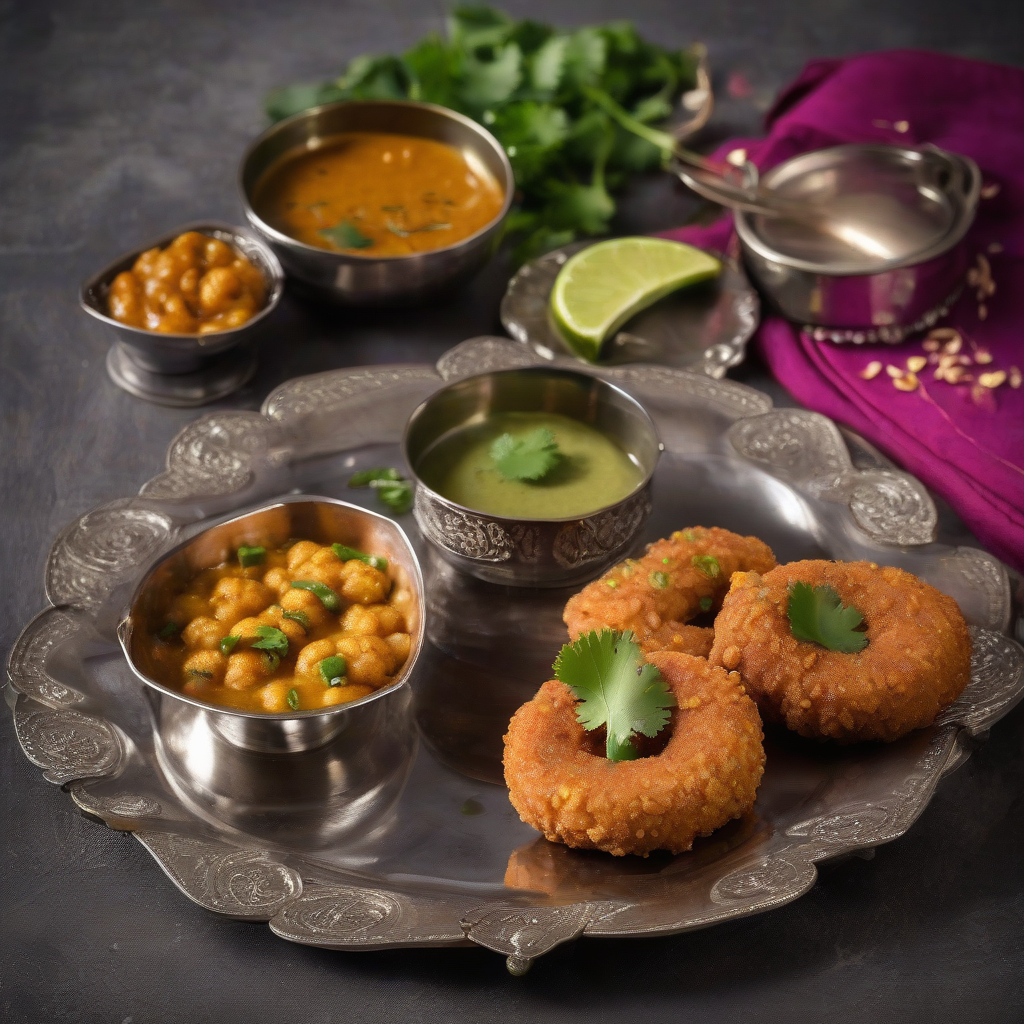Sabudana Vada: Crispy, Crunchy, and Totally Chakachak!
Namaste Doston! Kem cho? Kai po che? (Greetings friends! How are you? What’s up?) Chef Curry Do’pyaza here, back in your kitchens (virtually, of course!) with a recipe that’s close to my heart and guaranteed to make your taste buds dance a little jig. Today, we’re diving into the world of Sabudana Vada, those delightful little spheres of crispy goodness!
This isn’t just any snack; it’s a taste of tradition, a burst of flavor, and a whole lot of fun to make.
When Do We Devour These Delicious Discs?
Sabudana Vada shines brightest during Navratri, Ekadashi, and Mahashivratri – Hindu festivals where fasting is observed. These little vadas are perfect because they’re packed with energy and keep you feeling full and satisfied. But honestly, you don’t need a festival to enjoy them! They’re fantastic any time of year, especially on a rainy evening with a hot cup of chai.
A Little History Lesson (Don’t Worry, It’s Short!)
Sabudana, also known as Sago, comes from the Sago palm. It’s believed to have originated in Southeast Asia and made its way to India. People quickly realised its potential as a filling and easily digestible food, especially during fasting periods. Over time, clever cooks (like your truly!) developed recipes like the Sabudana Vada to make it even more appealing.
Let’s Get Cooking!
Preparation Time: 20 minutes (plus soaking time)
Cooking Time: 20 minutes
Ingredients – The Chakachak Checklist:
- 1 cup Sabudana (Sago Pearls) – The small variety works best!
- 1 cup Moongphali Dana (Roasted Peanuts), coarsely crushed
- 2 medium size Aloo (Potatoes), boiled, peeled, and mashed
- 2-3 Hari Mirch (Green Chillies), finely chopped (adjust to your spice level!)
- 1 inch Adrak (Ginger), grated
- 2 tablespoons Hara Dhaniya (Fresh Coriander Leaves), chopped
- 1 teaspoon Jeera (Cumin Seeds)
- 1/2 teaspoon Sendha Namak (Rock Salt), or regular salt to taste
- Oil for deep frying
For the Peanut Chutney – The Perfect Partner:
- 1 cup Moongphali Dana (Roasted Peanuts)
- 2-3 Hari Mirch (Green Chillies)
- 1/2 inch Adrak (Ginger)
- 2 tablespoons Hara Dhaniya (Fresh Coriander Leaves)
- 1 tablespoon Nimbu ka Ras (Lemon Juice)
- Salt to taste
- Water as needed
Step-by-Step – The Recipe Rhapsody:
- Soak the Sabudana: Wash the sabudana thoroughly and soak it in just enough water to cover it for at least 4-5 hours, or preferably overnight. You want the sabudana to be soft and easily mashable. If there is any excess water, drain it completely.
- Mash the Potatoes: Make sure your boiled potatoes are nicely mashed. No big lumps allowed!
- Combine the Ingredients: In a large bowl, combine the soaked sabudana, mashed potatoes, crushed peanuts, chopped green chilies, grated ginger, chopped coriander, cumin seeds, and salt. Mix everything really well with your hands. This is where the magic happens!
- Shape the Vadas: Take a small portion of the mixture and shape it into a round vada, about 2 inches in diameter. Flatten it slightly. Repeat with the remaining mixture.
- Fry the Vadas: Heat oil in a kadhai (wok) or deep frying pan over medium heat. Gently slide the vadas into the hot oil, a few at a time. Fry them until they are golden brown and crispy on both sides.
- Drain and Serve: Remove the vadas from the oil and drain them on a paper towel to remove any excess oil.
Peanut Chutney – The Zesty Zing:
- Blend it Up: In a blender, combine the roasted peanuts, green chilies, ginger, coriander leaves, lemon juice, and salt.
- Add Water: Add a little water at a time until you get a smooth, slightly thick consistency.
- Taste and Adjust: Taste the chutney and adjust the salt, lemon juice, or green chilies to your liking.
Tips for the Best Sabudana Vada:
- Soaking is Key: Don’t skimp on the soaking time! Properly soaked sabudana is crucial for the right texture.
- Don’t Overcrowd: When frying, don’t overcrowd the pan. Fry in batches to maintain the oil temperature and ensure even cooking.
- Hot Oil is Essential: The oil needs to be hot enough, but not smoking hot. Medium heat is perfect.
- Bind Well: If the mixture is too loose, add a little more mashed potato or singhare ka atta (water chestnut flour) to bind it.
Cooking Variations – Adapt to Your Kitchen!
- Gas Stove: The classic method, as described above.
- Induction Stove: Same as gas stove, adjust the heat settings accordingly.
- Air Fryer: Preheat your air fryer to 375°F (190°C). Lightly brush the vadas with oil and air fry for 10-12 minutes, flipping halfway through, until golden brown and crispy.
- Oven: Preheat your oven to 375°F (190°C). Place the vadas on a baking sheet lined with parchment paper, brush lightly with oil, and bake for 15-20 minutes, flipping halfway through, until golden brown.
- Microwave: Not recommended, as the vadas won’t get crispy.
Nutritional Information (Approximate per Vada):
- Calories: 150-200
- Protein: 3-5g
- Carbohydrates: 20-25g
- Fat: 7-10g
Serving Suggestions – Make it a Feast!
Serve your crispy Sabudana Vadas hot with the homemade Peanut Chutney. A dollop of fresh yogurt or a sprinkle of chaat masala adds extra zing! They’re also delicious with a side of sweet curd (dahi).
Time to Cook!
So there you have it! A simple, delicious, and truly Indian recipe for Sabudana Vada. I urge you, my dear readers, to try this recipe at home. It is a perfect snack for all ages and it is sure to be a hit with your friends and family.
Happy cooking, and remember, the best ingredient is always love!
Until next time,
Chef Curry Do’pyaza, signing off!
